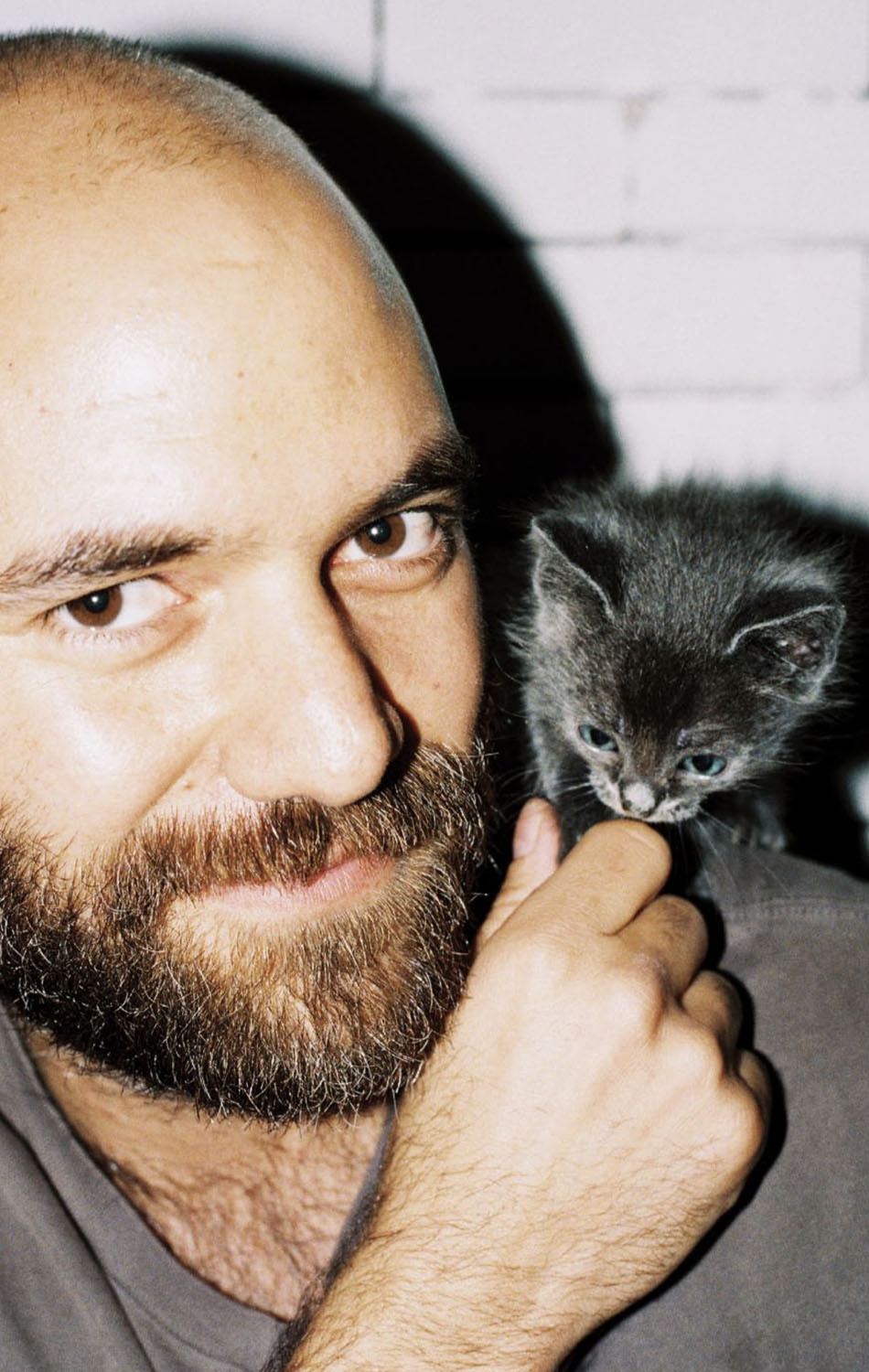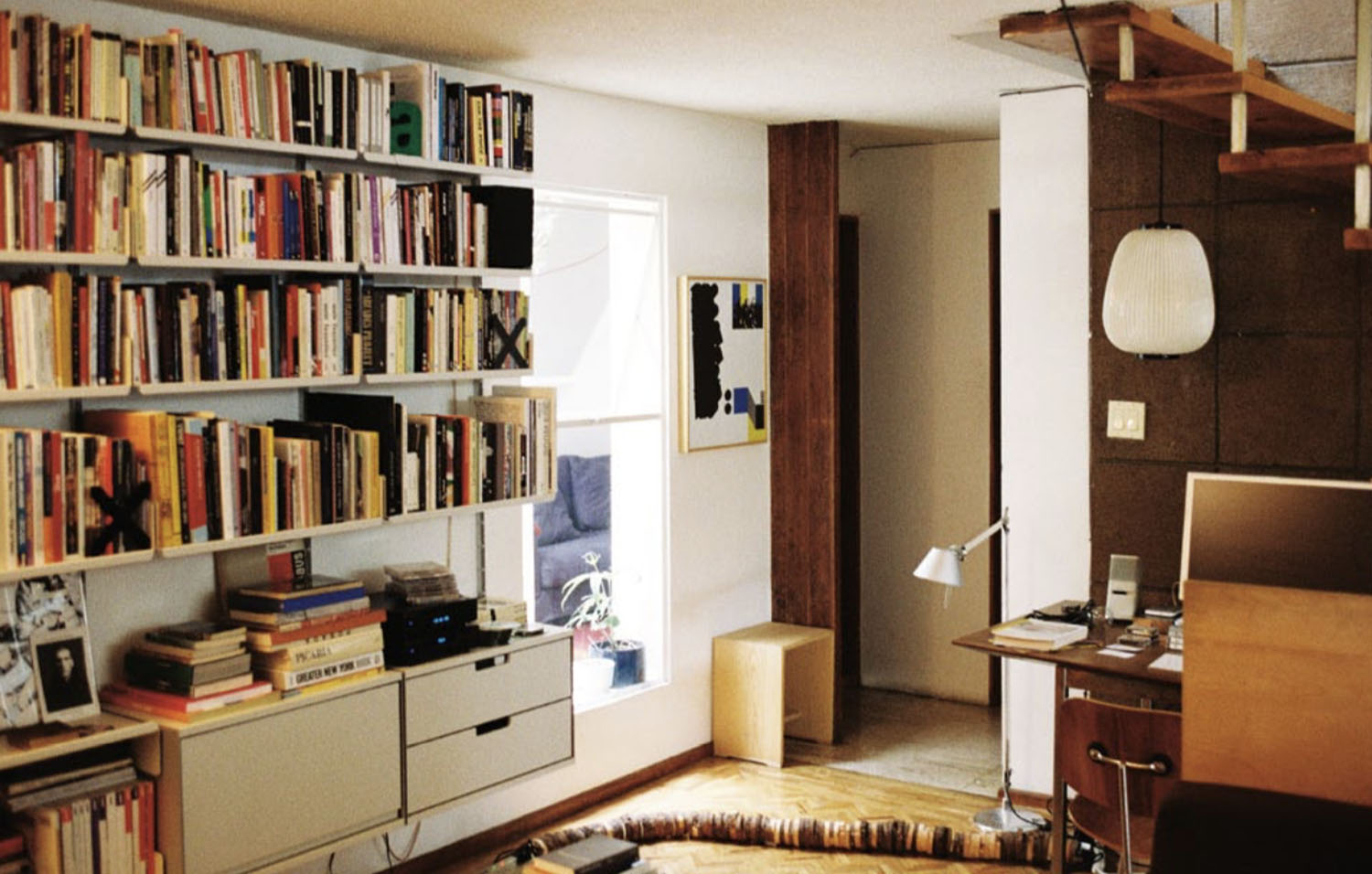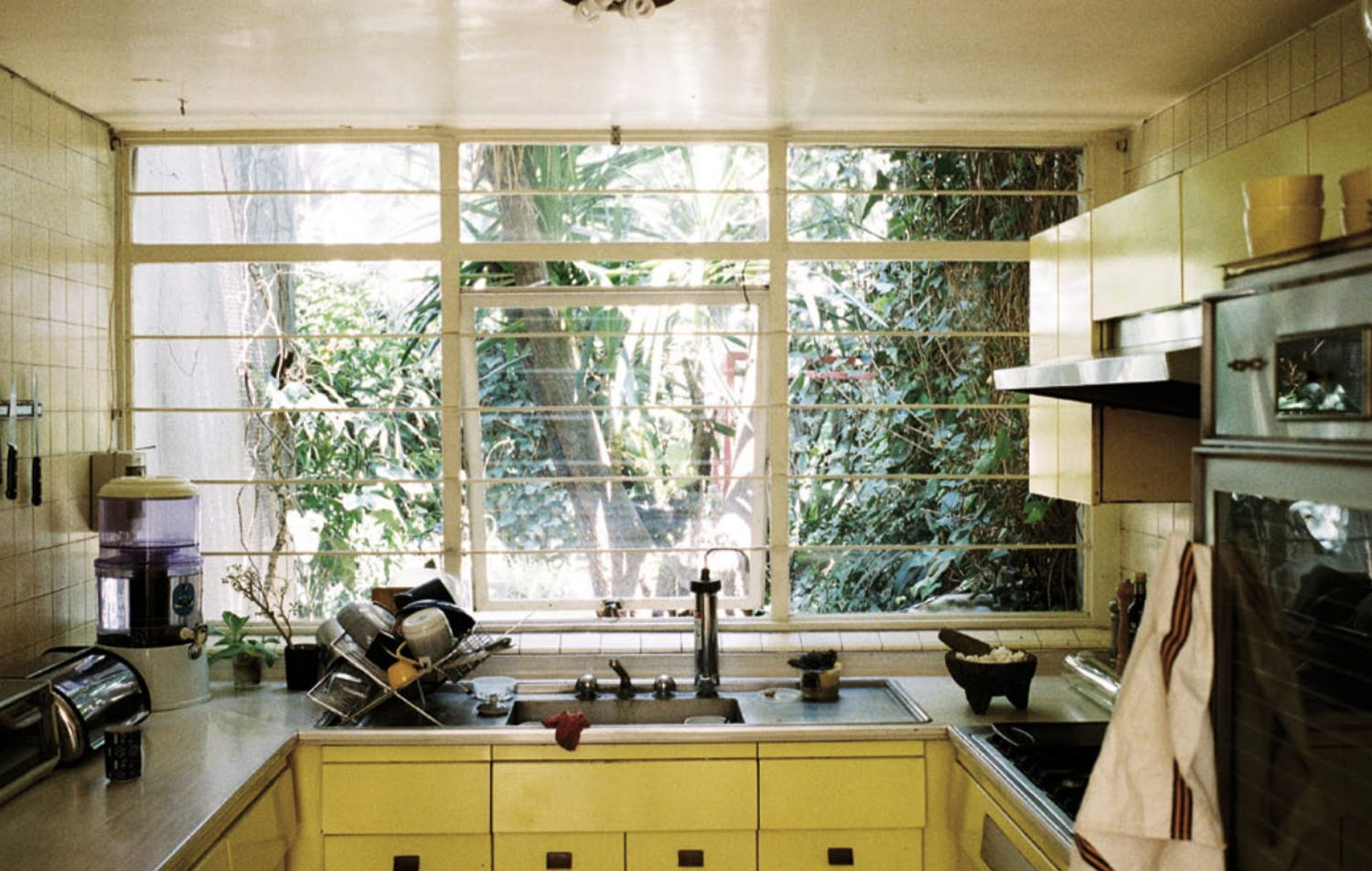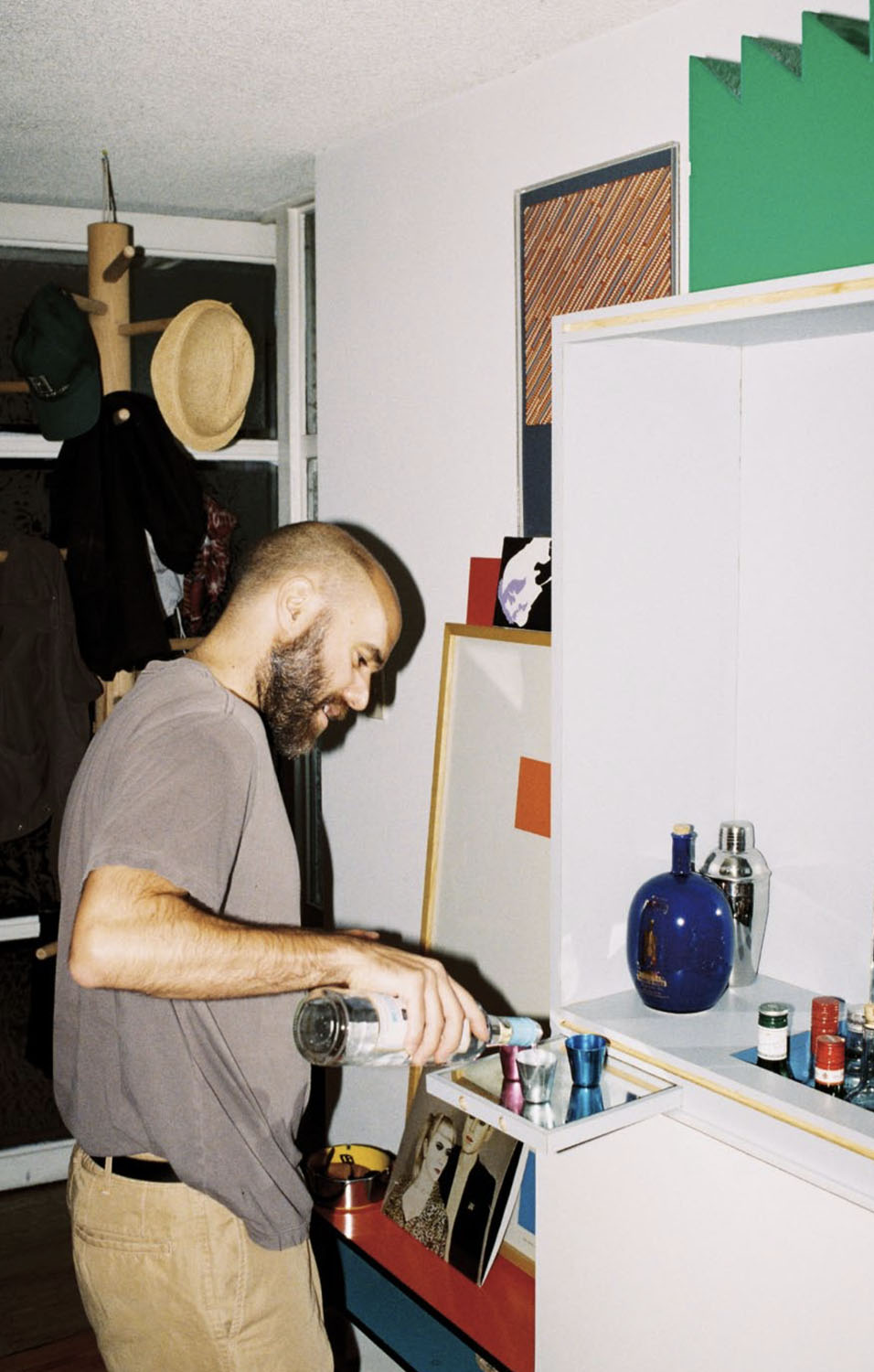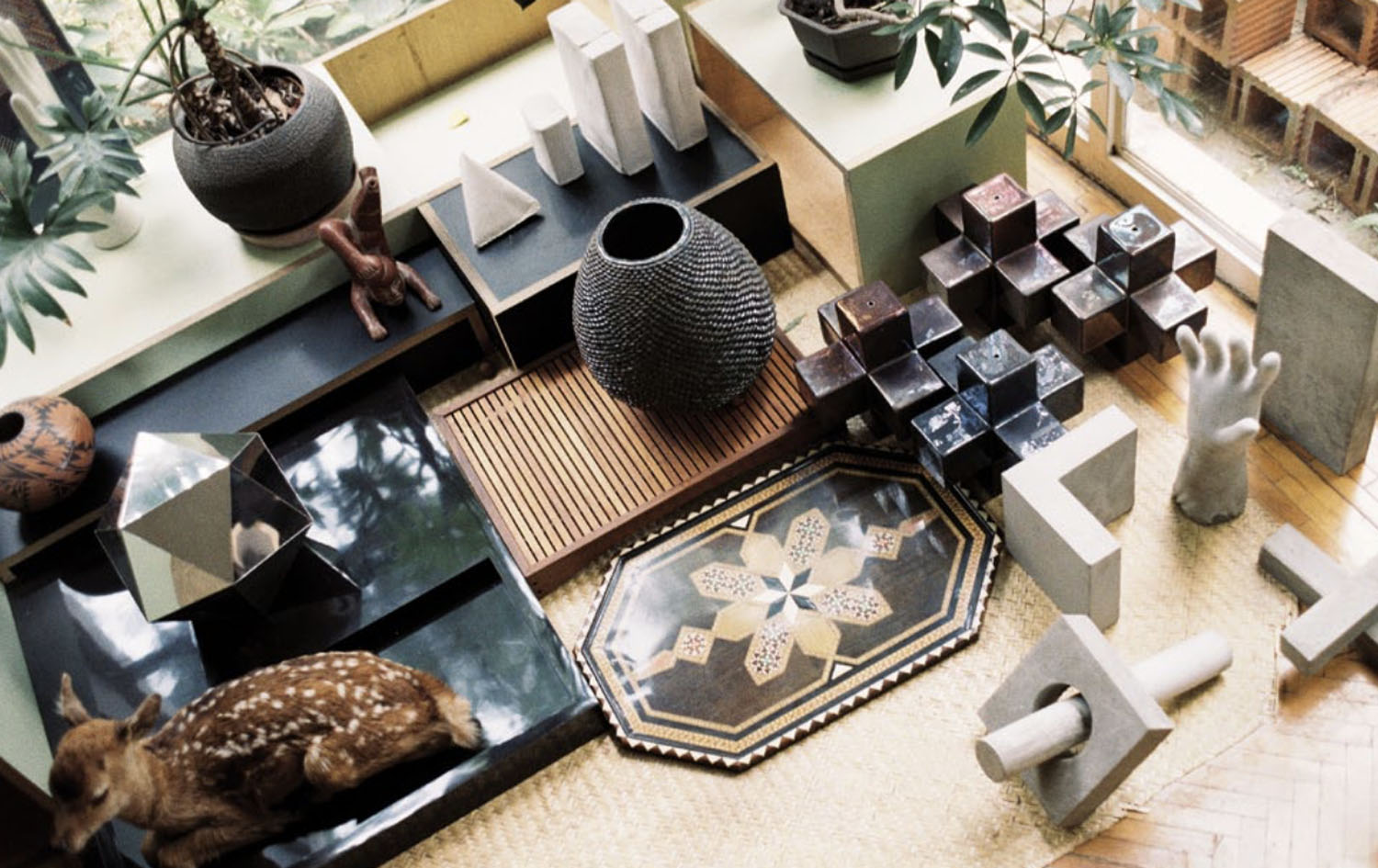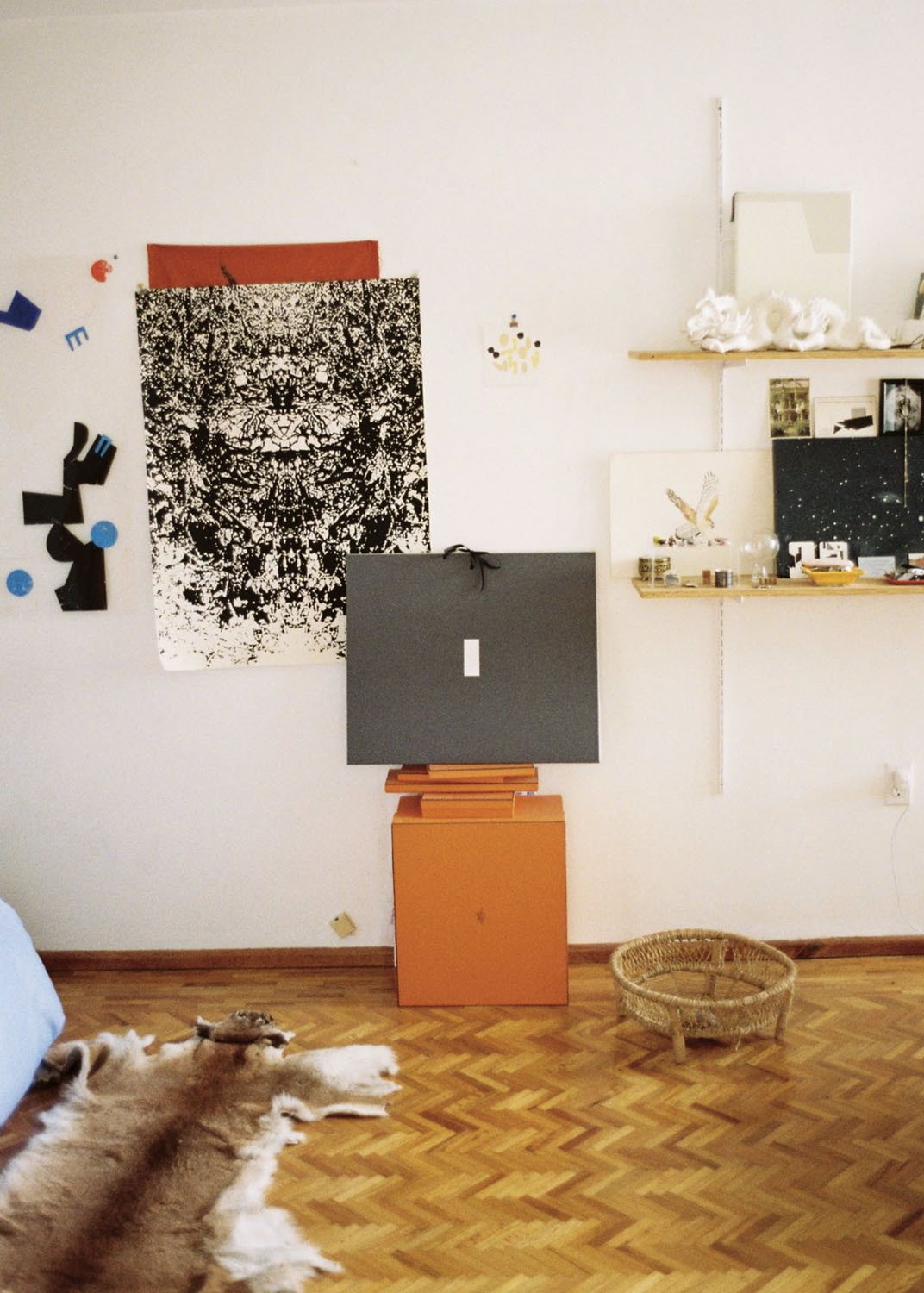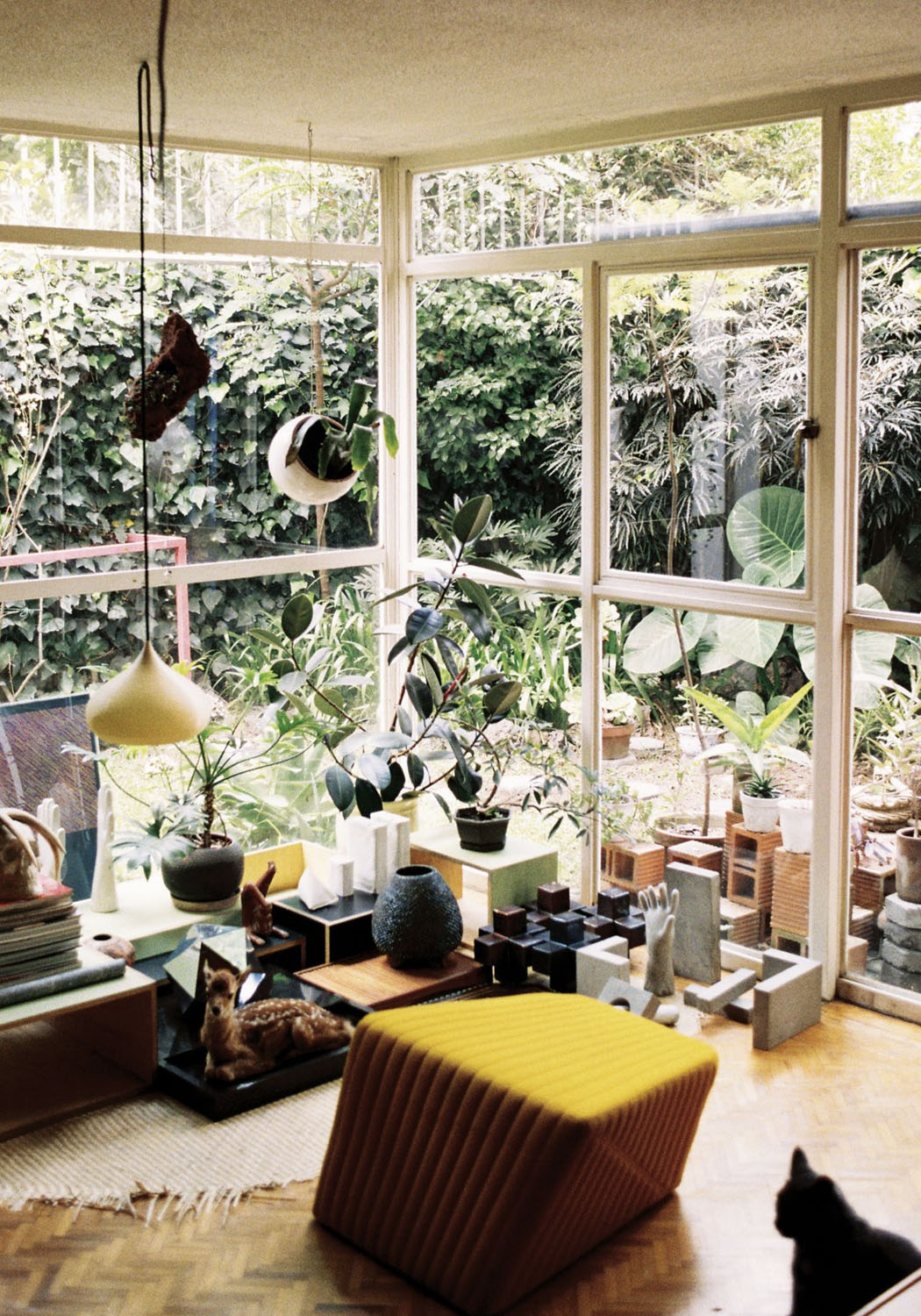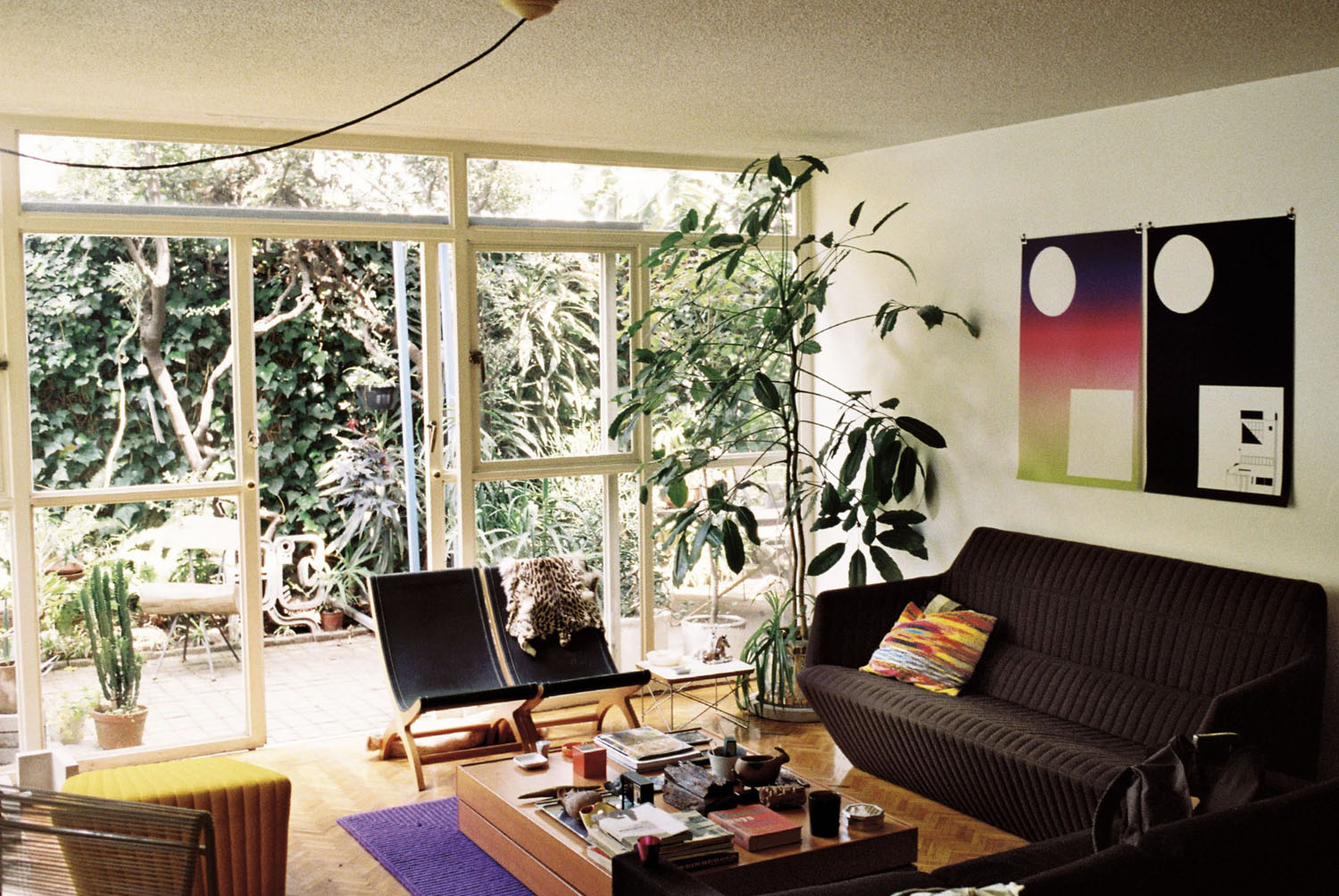JOSÉ LEÓN CERRILLO
Interview by Michael Bullock
Photography by Nacho Alegre
Apartamento 9, 2012
At the moment Mexico City is one of the most fun places in the world. There is a new energy, and new sense of freedom fueled by a new generation’s rejection of the long dominating religious and political status quo. This has created a feeling of openness and experimentation, sexual freedom, and hedonism. It feels like the celebrated myth of New York City from the ‘70s and early ‘80s: cheap rents and wild nights. Also like in those glory days there is a true sense of artistic community, fostering a growing scene that’s getting more and more international attention. One of the key members of this moment is quick-witted Mexican artist José León Cerrillo.
After living in New York for a decade Cerrillo returned to his home country for love, but instead fell in love with the city itself. Once back, he settled in a fantastic building in Anzures, an unassuming triangular neighbourhood surrounded by highways (yet surprisingly peaceful). His unusually untouched ‘50s modernist home certainly helped to ease the transition. Its cozy interior has the same signature trade marks as his own work: bold shapes, bright colors, and a fluidity between furniture and painting, graphic design and sculpture. The house is full of books, objects of curiosity, and plants. But what could be clutter is organized into displays that feel more like art installations then home décor.
Before the interview begins José León offers me a drink, sliding open a white cabinet. When closed it’s a quiet, minimalist monolith but open it’s a self-contained nightclub, complete with a secret pull out mirrored drawer. He explains it’s his own design created for a painting show and pours me a glass of Antiguo, his favorite tequila, which we drink throughout the entire interview.
Did you always want to be an artist?
I think so, yes. I’ve never really thought about how it happened. I always drew as a kid. I was really into ceramics. I took an aptitude test in the eleventh grade. (Is that what they call it in English? You know, those tests that help you see what you might be?). The answer I got was a barman. I felt incredibly insulted. Who’d guess an aptitude test could recommend that.
Well they must’ve known how much you love Tequila, ha... so, what were you doing in LA?
Well, I was invited to do an exhibition for this project called LAND and the Schindler Foundation offered me a residency to produce the work. They’d recently acquired one of his masterpieces and I was lucky enough to be the first one to live in it. It had been a private residence so it had never been open to the public. I lived there for three months and worked onsite.
How would you describe the house?
It’s sort of like Flintstones modernism. The house has no right angles, they’re all rounded out. There’s a low rising stucco wall that divides the living room, plus a lot of the furniture is built in, so it comes out of the walls. It’s not like a clean slate glass box; it’s more of a cave.
So what did you make there?
Since the house had been closed for so long I decided to open it for events loosely based on ‘30s-style avant-garde soirées. I hosted several and for each I invited other artists. So it became four different projects. In the end what was produced was this book that documented all of it [he hands me a book off the coffee table] and a portfolio of prints.
What was good about the place, as with every good modernist house, was that it had a lot of glass so you could see in from outside. For one performance we covered all the glass with rice paper and lit it from inside, so from outside everything looked like silhouettes and the performers were backlit.
For another soirée I invited the vogue dancer Kevin Aviance. For his event the audience was invited to what they thought was a serious art lecture. Kevin was in the audience wearing a crazy outfit, completely covered, like a cocoon. As the lecture went on he started undressing. He had headphones on, so he was dancing to music that no one else could hear, and effectively disrupted the lecture. Kevin’s an enormous guy, almost 7 feet tall, plus he was wearing 12-inch stilettos. Inside the house he looked like a giant. His head nearly touched the ceiling. The house was built with Schindler proportions, tiny.
Did living in a design icon impact the way you thought about your own living space?
I don’t know. While I lived there I was always thinking of Schindler. He was an incredibly selfish architect, in a good way, because his buildings were built for his own proportions and not based on supposedly universal proportions. So when I was there I kept imagining this old grumpy man walking around the house telling me what to do. Plus, you’re always very aware that you’re living in a monument/museum so you never feel that comfortable. Even with a fireplace it never felt cozy. Also, this is going to sound crazy but in a sense it was almost like living in printed matter. To me it translated very graphically.
Well that’s a big part of your own work, right? Translating the 2-D into 3-D. To me your art looks like graphic design that became sculpture.
Ha, yeah that’s really good. What’s important to understand is that it’s all language based and graphic design is a language, with its own pared down grammar. You know, when you deal with language you deal with desire.
As a kid, printed matter and magazines were always important to me. My father studied architecture for a bit and he had a great collection of design books and my grandfather was the first person in our town who had a subscription to National Geographic. His bookshelves were these huge yellow slabs. Growing up in a small town in the north east of Mexico, I spent all my time going through those collections. I always had a feeling I’d discover something I wasn’t supposed to see, but it also helped me fantasize about my future.
I’d always look at these houses and think, this could be my house. So yeah, my connection to living space was always based in 2-D. Does this make sense?
Yes. I think a lot of people think about space in 2-D because they experience fantasy interiors primarily through photography. Though that can lead to designing homes that are made for photography and not for living. But this place is very comfortable.
I was just reading the New York Times article about Tyler Brûlé, and I find his position almost offensive. He was talking about his niche markets of global nomads, people who have the monetary capacity to acquire anything but don’t know what to acquire. They only know they want status objects. I find his view of the universe so problematic, that any place can be everywhere at the same time. The particulars of anything are completely lost in this perfect aesthetic. It borders on fascism.
What do mean, that it gets creepy to make every basic need in your life so fetishised?
Yes and no, because to a certain degree, this fetish is really a fake one, I mean the object itself is valued because ‘a lifestyle guru’ endorsed it rather than because of its particularities. It’s the magazine as lifestyle that’s the fetish and the object is only an empty marker of a members only club. Very uninteresting, quite boring – this thing of the universal sophisticate, it manages to erase otherness and individuality. Plus I hate the idea of treating utilitarian design items like statues, putting things on pedestals, and stripping them of their usefulness. It can get kind of cold.
My favorite piece of design growing up was my father’s Scandinavian bookcase, that you could rearrange in many different ways to suit your specific needs; it had cabinets, and could even become a desk. There was a functionality to it but also a usability to it. It worked and it still works. Every time I visit my father I admire those shelves.
Did you ever try to buy them for yourself?
No, but I think that’s where my obsession with Dieter Rams’ 606 Universal Shelving System came from. When I first moved to New York I had a friend who worked at Moss and that was my secret jerk-off thing. Going to Moss to look at the Dieter Rams’ shelving. I’d think, someday I’m going to have those shelves, and now finally I do.
Speaking of that how do you feel about Moss closing its store?
As much as Moss created that whole aura of the object thing, Murray and Franklin’s vision is highly personalised. No-one else would have mixed that weird Nuremberg porcelain with Gaetano Pesce vases. Also they were so excellent with display, it always had a certain kind of logic.
Well yeah, their formula for design retail has been truly great for design in America. But then a bi-product of their approach helped to form this pedestal idea you speak of. I greatly respect what they do even so. I appreciate the risks they take introducing new talent.
Wallpaper* would not have been possible without Moss. It’s weird, but they took something away from living with it. Whereas everything in my house can and should be used.
You’re also excellent at display.
Hmmm... I’m aware I have a compulsive need to arrange things but I really enjoy living with stuff. It’s like having a perpetual living diary. To me a perfect Sunday, this is going to sound like a cliché, but a good Sunday is: wake up late, cook breakfast, feed the cats, go to La Lagunilla, the mother of all flea markets. I never really look for anything in particular. The best finds usually happen when expectations are low, or when one’s attention isn’t sharp enough. A hangover daze makes for good unsuspecting radar. Although a lot of this furniture is from when I lived in NY.
Really? When you moved back here didn’t you just want to start fresh?
No way. I rented a space in a container ship. It took forever. They basically go around the world before they come back. They don’t charge you anything for weight – it’s just space, so I just crammed everything in. I even brought my fucking bed that I bought in Chinatown.
Has the house become part of your identity?
It was but now it’s washing off. Four years ago I tried to buy it. I made the landlord a really good offer considering the market then. And now, in those four years, it’s increased threefold. It’s unheard of. So where I used to see a perfect corner, now I see clutter. I’m slowly unconsciously convincing myself that I’ll eventually have to leave this place.
So you’ve gentrified yourself out of your own neighbourhood. Ha.
I guess so.
I notice you don’t have a dining table.
You know, it’s been a problem. In the past, when I have a big party – it’s usually nice outside so we use the stone table in the garden.
I love your garden sculptures. It looks great to have those bold lines of colour framing the plants.
Thank you. Those are my sculptures. Each piece is supposed to be installed in such a way that they traverse two spaces. Each piece is site-specific so the design changes based on the collector’s home. I love the garden. I’m so lucky to have it.
What about that lamp on the floor, can you call it a lamp? You designed it?
Yeah, I guess that’s what you get when you ask an artist to design, because it could quite possibly be the worst designed lamp ever. I mean the idea was that it was going to be very cheap to produce, so it could be affordable. I don’t think the manufacturer ever expected something made out of like seven pieces of cement. But I’m happy with it.
It’s great. I also really love the secret bar you designed.
It’s from my first solo show in Mexico. It was inspired by the 2001 Space Odyssey monolith. It was supposed to be a painting show but all the paintings were very much like sculpture. And this bar sculpture was sitting in the middle of the gallery. I should really take design more seriously. I have three friends getting married who’ve all asked for a bar as a wedding gift. I love the idea of designing personalised bars.
It doesn’t have any hardware?
Yeah, it’s all dovetailed. It slides with the most basic elements. Instead of oil you can use soap. Like hand soap. In the grooves.
Is it difficult for you to switch from art to furniture?
Not at all. I wanted to make furniture. It was a weird transition all along. At first I was making paintings but I never considered them paintings, I considered them more like sculptures or objects. As an undergrad I made a painting that was a coat rack. It was an Ab Exy painting in dayglo colours, and it had many hooks. I was thinking a lot about décor and taste when I first got to New York. This was ‘94. I did my undergrad degree at SVA. It was a good time for New York. It was the last link of the tail before Giuliani started, so there were still all these corners of possibility in New York. The Cooler was there, the Meatpacking District was still the Meatpacking District. There was still this grimy core.
Was your New York apartment as colourful as your home here? I wonder how much the city you live in effects your home choices? In Mexico everything is so colourful.
Maybe it was a bit less colourful. It had concrete floors. Although as I said a lot of the things here are from there. But it’s true Mexicans love colour. I don’t really think about it when I’m in Mexico but I do when I’m in other countries. I was in Sweden last week. It’s obvious they have colour police. They don’t go past beige, salmon, or terracotta for the facades of the houses. Whereas here you could paint your house neon green and no-one would say a thing. In Sweden, it’s filtered through the concept of social democracy. You’re required to sacrifice individual desires for the common good. But it’s related to the initial ideas of Scandinavian design, like making it good for everyone. Here it’s quite the opposite.
How long did you stay in New York?
For almost ten years. It was a weird time in my life. I felt like if I was going to stay in New York I had to think about permanence. I was living both in New York and in Mexico City, and the back and forth was just too much. So I opted to come back. Granted for love, for one, and also I thought it was difficult to live in New York. It’s a super expensive city, a city of endless work. New York had an inescapable ‘trapped in the Filofax’ feeling where everything from work to hanging out needed to be scheduled, checked, dated and confirmed.
Sometimes it seems like the time in between is more productive. Here it’s a different sort of pacing. It’s like the day has more hours. But the love thing aside, I think it’s one of the best decisions I’ve ever made. Maybe the only good decision I’ve ever made because I have never thought ‘what if’.
I never doubted it at all. Even though Mexico City is pretty fucked up.
I guess as a New Yorker, I only see a kind of romanticised version of Mexico City and I love what I see, so I don’t fully understand how fucked up it is. But I know what you mean. Everything is looser here, and people have time to hang out. Also the music, art, and fashion scenes don’t have this enormous over-developed PR and marketing machinery built up around them. I keep telling people that being in Mexico City is what I imagine New York was like in the ‘70s and early ‘80s. I mean you walk through the park in Centro on Friday night and see the trannies doing their make up and hair and getting ready for the club. Nightlife is unregulated, there are fantastic after hours. There’s a feeling of freedom here that New York lost, as you said, in the ‘90s.
Yes, It relates to what you were saying about colour. There’s a sense here that there’s space to perform. Lately there’ve been all these crazy social changes. The younger generations don’t give a fuck anymore about social stigmas or pressures that have been a given in Mexico forever, so there’s been a dismantling or rear-ranging of the way things work on the street. Like you were saying the trannies getting ready, or have you been on the metro? The last car on every train is reserved for guys to hook-up. They even go at it publicly. Four or five years ago that would have been completely unimaginable. Right now in Mexico there is this feeling of openness that is fantastic.
